hankyoreh
Links to other country sites 다른 나라 사이트 링크
Whales can remove as much carbon as global forest ecosystems, researchers say
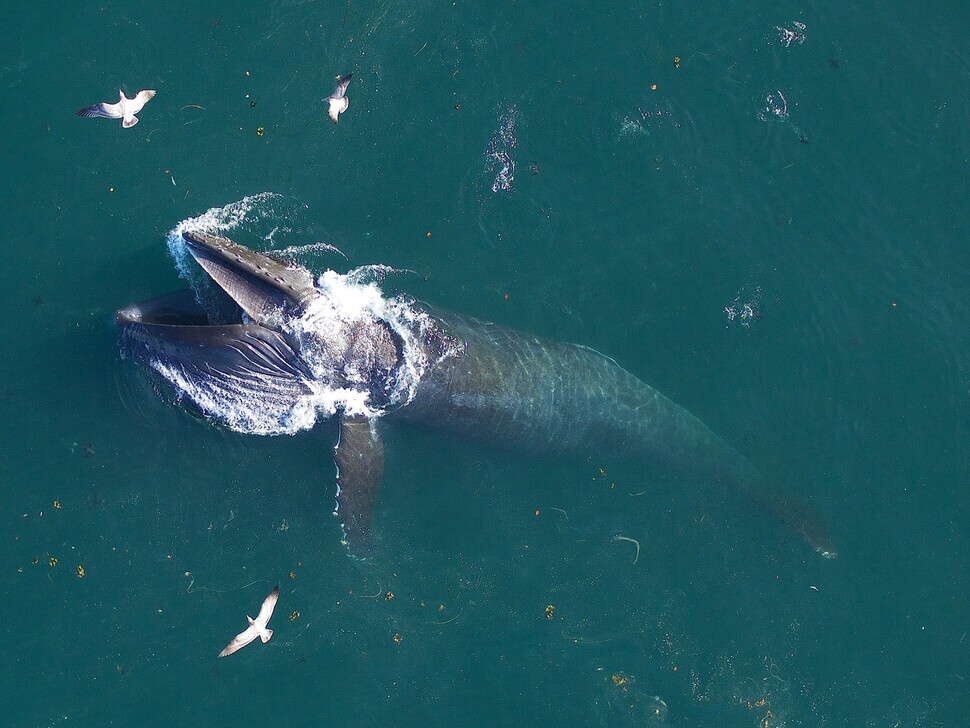
A new study has shown that the importance of baleen whales, including blue whales, in marine ecosystems has been underestimated. Of particular note, it’s been found that baleen whale excrement enriches the oceans by 11% and absorbs more than 200 million tons of greenhouse gases.
Matthew Savoca, a postdoctoral researcher at Stanford University in the US, revealed in a paper published Nov. 4 in the scientific journal Nature that previous studies have “underestimated baleen whale prey consumption by threefold or more in some ecosystems.” The more whales eat, the more excrement they release into the marine ecosystem, providing a key source of nutrition.
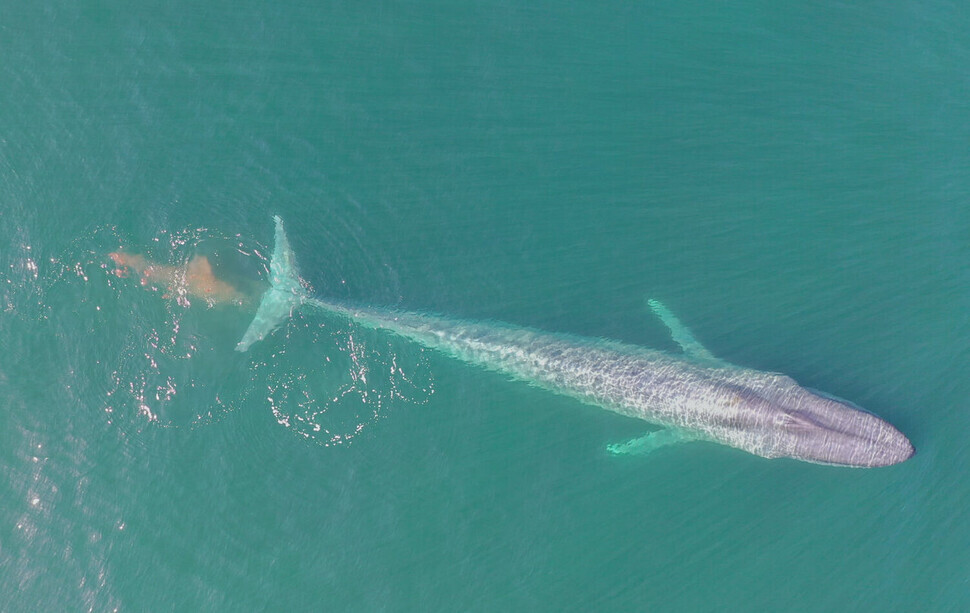
During the 19th century, commercial whaling resulted in the capture of 2 to 3 million baleen whales. Nicholas Pyenson, curator at the Smithsonian National Museum of Natural History, who participated in the study, said in a press release, “The implication of these numbers is that whales supported far more productive ocean ecosystems before whaling, and that promoting whale recovery in the 21st century may restore ecosystem functions lost in the past hundred years.”
The motivation behind the study was the lack of precise data on how much giant baleen whales eat every day. It’s difficult to study as whales that hunt krill dive to depths of more than 100 meters in the ocean. At 30 meters long and weighing 200 tons, blue whales cannot be observed in a typical aquarium.
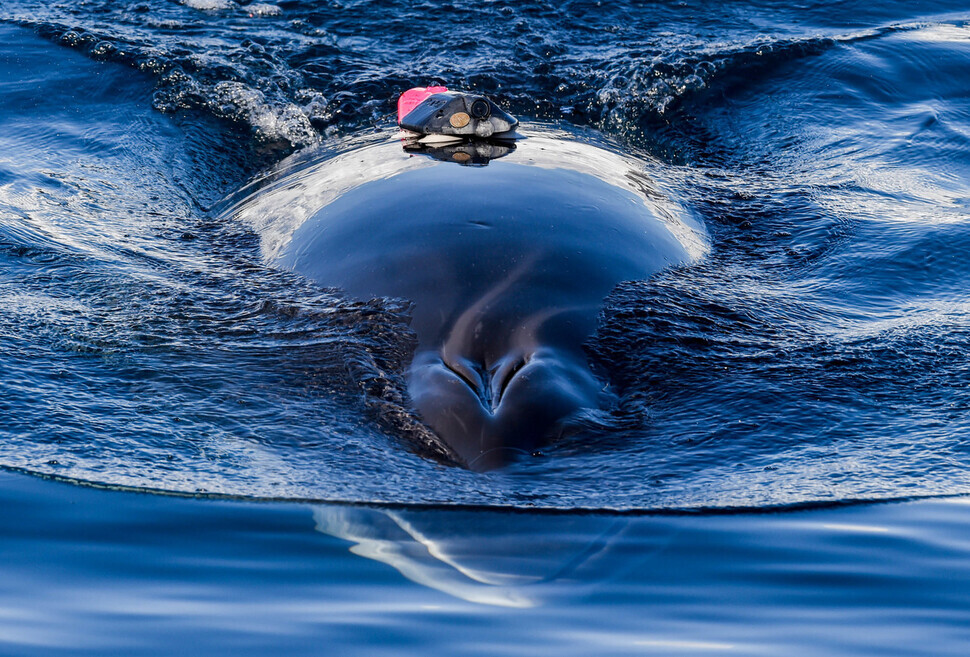
Up to now, scientists have estimated that baleen whales eat 5% of their body weight each day during feeding season by estimating calories needed for metabolic functions or by analyzing the stomach contents of dead whales. However, from 2010 to 2019, researchers attached tracking devices to 321 baleen whales from seven species, including blue whales, whalebone whales, and humpback whales in Atlantic, Pacific, and Antarctic oceans to investigate their hunting behavior. The size and density of krill were measured with sonar from boats, while drones were used to measure the size of whales.
The results of this study dubbed “the most accurate estimate ever made” were surprising. The average amount of krill a baleen whale eats every day is 5 to 30% of its body weight, an estimate three times higher than previously believed. Blue whales in the northeast Pacific, with an average body length of 22.4 meters, eat 16 tons of krill a day.
Researchers are paying particular attention to whale excrement. Whale excrement contains a large amount of iron from krill. Iron is the least available nutrient in the world’s oceans.
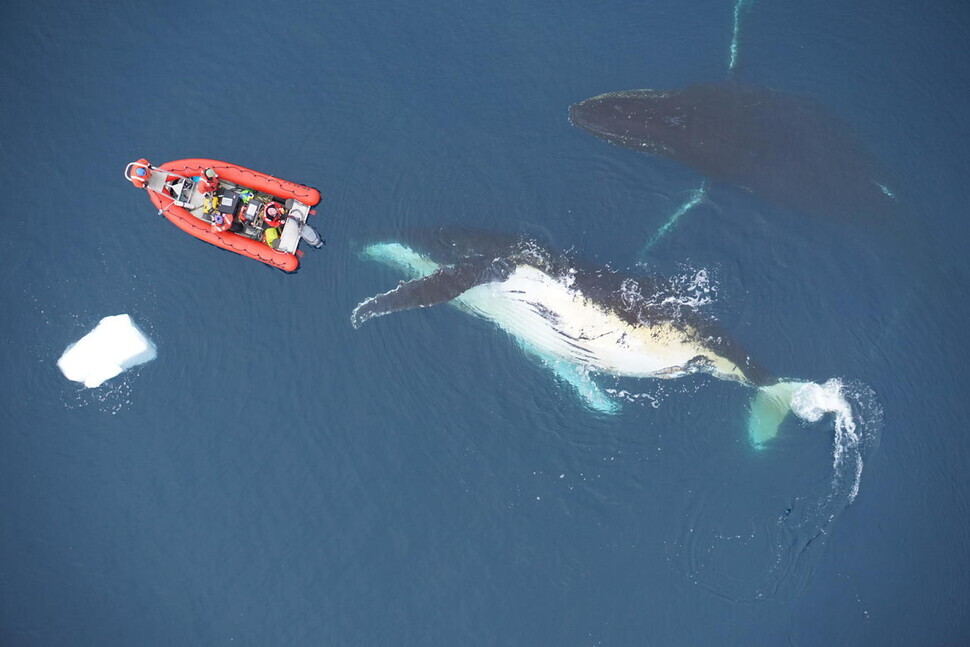
Whales scatter excrement with an iron concentration 10 million times higher than that of surrounding surface seawater. This fertilizes phytoplankton, allowing it to flourish. In turn, this creates abundance in the marine ecosystem food chain as zooplankton and small fish feed on phytoplankton. Phytoplankton also absorbs carbon dioxide from the atmosphere through photosynthesis and isolates carbon from the environment when it dies and sinks.
Researchers estimate that the mink, humpback, bluefin, and blue whales in the Antarctic Ocean consumed 430 million tonnes of krill annually in the early 1900s. This is twice the current total amount of krill in the Antarctic Ocean and more than twice the global catch.
Researchers estimated that during this period, baleen whales excreted 12,000 tons of iron on the surface of the sea by eating krill — 10 times the present level.

So what happens to a marine ecosystem when baleen whales, which eat and excrete huge amounts of krill, are drastically reduced through whaling? In other ecosystems, when predators disappear, prey and competition for prey proliferate. But in the Antarctic Ocean, the krill population has decreased by more than 80% in seas marked by the disappearance of the baleen whale. The populations of waterfowl, predatory fish, and other marine mammals have either remained the same or have declined.
Researchers call this the “Krill Paradox.” Likening the whales to moving “krill processing plants,” Savoca says, “Whales the size of Boeing 737s have increased productivity in marine ecosystems far away from land. But how will we replace this loss of fertilizer if one day they disappear?”
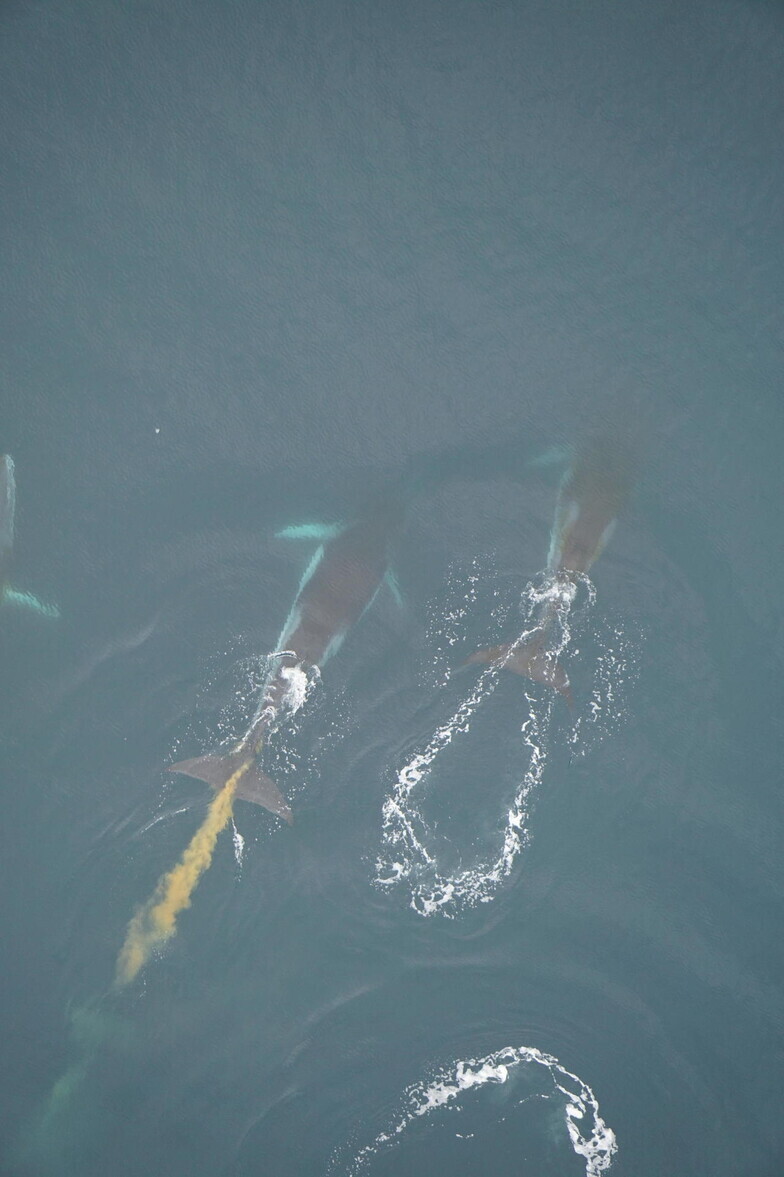
Researchers argue that replenishing the large whale population will restore lost sea productivity and, as a result, increase the amount of carbon absorbed by phytoplankton. They estimate that if baleen whales are restored to pre-whaling levels from the beginning of the 20th century, the added nutrients to the ecosystem will increase sea productivity by about 11% in the Antarctic Ocean alone and will absorb and store 215 million tonnes of carbon annually.
Pyenson notes, “Our results suggest the contribution of whales to global productivity and carbon removal was probably on par with the forest ecosystems of entire continents, in terms of scale.”
He adds, “That system is still there, and helping whales recover could restore lost ecosystem functioning and provide a natural climate solution.”
By Cho Hong-sup, Environment Correspondent
Please direct questions or comments to [english@hani.co.kr]
Editorial・opinion
![[Column] Season 2 of special prosecutor probe may be coming to Korea soon [Column] Season 2 of special prosecutor probe may be coming to Korea soon](https://flexible.img.hani.co.kr/flexible/normal/500/300/imgdb/original/2024/0426/3317141030699447.jpg) [Column] Season 2 of special prosecutor probe may be coming to Korea soon
[Column] Season 2 of special prosecutor probe may be coming to Korea soon![[Column] Park Geun-hye déjà vu in Yoon Suk-yeol [Column] Park Geun-hye déjà vu in Yoon Suk-yeol](https://flexible.img.hani.co.kr/flexible/normal/500/300/imgdb/original/2024/0424/651713945113788.jpg) [Column] Park Geun-hye déjà vu in Yoon Suk-yeol
[Column] Park Geun-hye déjà vu in Yoon Suk-yeol- [Editorial] New weight of N. Korea’s nuclear threats makes dialogue all the more urgent
- [Guest essay] The real reason Korea’s new right wants to dub Rhee a founding father
- [Column] ‘Choson’: Is it time we start referring to N. Korea in its own terms?
- [Editorial] Japan’s rewriting of history with Korea has gone too far
- [Column] The president’s questionable capacity for dialogue
- [Column] Are chaebol firms just pizza pies for families to divvy up as they please?
- [Column] Has Korea, too, crossed the Rubicon on China?
- [Correspondent’s column] In Japan’s alliance with US, echoes of its past alliances with UK
Most viewed articles
- 1‘We must say no’: Seoul defense chief on Korean, USFK involvement in hypothetical Taiwan crisis
- 2[Column] Season 2 of special prosecutor probe may be coming to Korea soon
- 3N. Korean delegation’s trip to Iran shows how Pyongyang is leveraging ties with Moscow
- 4Amnesty notes ‘erosion’ of freedom of expression in Korea in annual human rights report
- 5Korea sees more deaths than births for 52nd consecutive month in February
- 6[Reportage] On US campuses, student risk arrest as they call for divestment from Israel
- 7[Editorial] New weight of N. Korea’s nuclear threats makes dialogue all the more urgent
- 8‘Weddingflation’ breaks the bank for Korean couples-to-be
- 9Division commander ordered troops to enter raging flood waters before Marine died, survivor says
- 10[Editorial] Korea’s surprise Q1 growth requires objective assessment, not blind fanfare